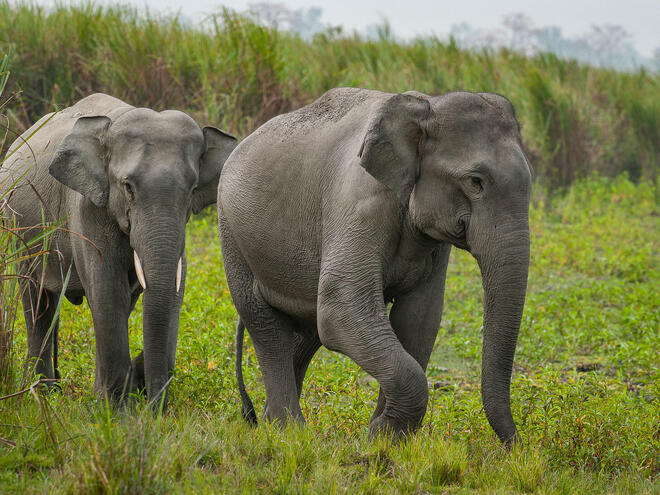The African elephant is the world's largest land mammal – with males on average measuring up to 3m high and weighing up to 6 tonnes.
Males only reach their full size at 35-40 years - that’s well over half their lifespan as wild elephants can live for up to 60-70 years.
There are two species of elephant: African and Asian. The ears of African elephants are much larger than their cousins and are described as being shaped like the African continent, whereas the ears of Asian elephants are shaped like the Indian subcontinent.
Elephants have around 150,000 muscle units in their trunk.
Their trunks are perhaps the most sensitive organ found in any mammal - Asian elephants have been seen to pick up a peanut, shell it, blow the shell out and eat the nut.


